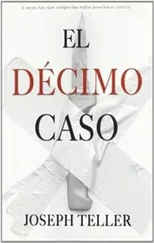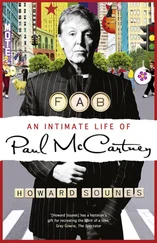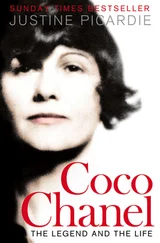Her arthritis and rheumatism had made her less nimble; at work she would jab herself with pins. Sucking the injury, she would yell, “Ouch, what was that?” and while she was exhausted and would sometimes say, “There are days I want to drop everything,” the underlying theme was always the same: “I must think of my collection, because that’s the future.” And, of course, as long as there was the possibility of another collection, of working, there was always the possibility of avoiding death.
By 1970, while knowing that it drew nearer, Gabrielle often found the thought of not existing an impossibility. Yet in saying “I don’t believe much in death,” she was contemplating something further: “The soul departs: the ordeal has lasted long enough. For the Hindus it’s merely a transformation… “Give up one’s soul to God”—I like that expression… what remains of us is what we’ve thought and loved in life.” 28
On that Saturday in January 1971, Gabrielle had been particularly irritable with her assistants; she was even short with her devoted Claude Delay. Gabrielle’s collection was almost upon her, and her nerves were raw:
Coco had mood swings all the time. One day she was ruminating and I was there. And she was talking about women: “Nowadays women don’t need men! We’re independent…” And she would hold forth like that for ten minutes all alone. And all my life, I see her, she walks two steps, she turns back and says, “A woman without men, what’s the point?” That was Chanel. An idea and its opposite. 29
She changed her mind constantly, one minute telling Claude she was going to give it all up, that she wouldn’t do it anymore; then, away from work, she was waiting only until it was time to go back to the rue Cambon. On her bedside table was Erlanger’s Richelieu ; she told Claude it was “the best story there is in the history of France… it’s better than Alexander Dumas, but it hasn’t got so much passion.”
On that Sunday, January 10, Claude returned and lunched with Gabrielle, then accompanied her on her customary drive around the Longchamp racecourse. The sun shone pale through the wintry mist. Later as they drove back through the place de la Concorde — the great square through which Gabrielle had fled, almost sixty years before, from Arthur Capel’s truth about her business not making any profit — Gabrielle bowed, telling Claude she was saluting the moon. It was full. Bidding Claude farewell, Gabrielle told her, “I’ll be working tomorrow.”
In her suite, she told Céline that she was very tired and must lie down; Céline could only persuade her to remove her shoes. Gabrielle lay drowsing. Later, she told her maid she would eat in her rooms, read the restaurant menu, then cried out, “I’m suffocating… Jeanne… the window.” Céline rushed to her side; Gabrielle’s face was taut with pain and she held her hands over her chest. She was too weak to break the phial of morphine always by her bed, and taking the syringe, Céline injected her to relieve the pain. Gabrielle murmured, “So that’s the way one dies.” Celine immediately phoned the doctor, but when she returned, she saw that her mistress was quite still. She closed Gabrielle’s eyes.
Next day, newspapers across the world announced the death of “one of the greatest couturiers of the century,” and tried to encapsulate her achievements as the woman who had become a legend in her own lifetime. Claude Delay returned to pay Gabrielle her own respects and found her “very small under the white Ritz sheets drawn up to her heart.” On Gabrielle’s bedside table was the beautiful icon Stravinsky had given her in 1921.
On January 14, a funeral service was held for Gabrielle in the Madeleine, the great parish church of the Parisian elite, close by the rue Cambon. Gabrielle’s small coffin was covered in a mass of white flowers, with the exception of two wreaths of red roses, one from the Syndicat de la Couture, the other from Luchino Visconti.
Whatever the personal feelings of her fellow couturiers, virtually all of them were there to render her homage, including Balmain, Balenciaga (whose graciousness and forgiving nature sent him there “to pray for her” despite her having destroyed their close friendship with unkindness), Castillo, Marc Bohan and Yves Saint Laurent. Notwithstanding Gabrielle’s criticism of most of them at one time or another, they cannot but have been conscious that her remarkable life’s work had brought great credit to their profession. Gabrielle’s friend Michel Déon made a plea for compassion in one’s final judgment:
One shouldn’t turn one’s back on Coco but, on the contrary, help her to erase everything that had embittered her so much it was making her suffocate. Between the imaginary world where she was taking refuge and the cruel world which had hurt her… the gap remained impassable. 30
Meanwhile, standing in the front row for the entire funeral ceremony were Gabrielle’s models, all dressed in Chanel suits. Behind them were the forewomen and foremen, the seamstresses and numerous assistants who made up the team at rue Cambon, without whom Gabrielle’s ideas would have been impossible. A fascinated crowd joined Paris society, and Gabrielle’s friends, who included Salvador Dalí, Lady Abdy, Antoinette Bernstein, Serge Lifar, André-Louis Dubois, Robert Bresson, the Mille brothers, Jacques Chazot and Jeanne Moreau, whose friendship Gabrielle’s defensiveness had made her reject.
A much smaller group of mourners, including Gabrielle’s great-niece, François Mironnet and Lilou Marquand, later followed Gabrielle’s coffin to Switzerland, where she was laid to rest in the cemetery of Lausanne. Why Switzerland? While deeply French, Gabrielle was also ambivalent about her compatriots, just as some of them were about her. She had said, “The French don’t like me, it can’t be helped.” She had also said, “I have always needed security,” and in Switzerland, apparently, she felt secure. A marble headstone was raised to her, with the heads of five lions, her zodiac sign, carved in bas-relief. Below them is a cross, below that, simply:
GABRIELLE CHANEL
1883–1971
However many words were written on Gabrielle in the weeks after her death, typically, in death as in life, she would manage her legacy. In that remarkable memoir she had given to Paul Morand just after the war, she had “written” her own epitaph:
My life is the story — and often the tragedy — of the solitary woman. Her woes, her importance, the unequal and fascinating battle she has waged with herself, with men, and with the attraction… and dangers that spring up everywhere.
Today, alone in the sunshine and snow… I shall continue, without husband, without children, without grandchildren, without those delightful illusions… My life has been merely a prolonged childhood. That is how one recognizes the destinies in which poetry plays a part… I am not a heroine. But I have chosen the person I wanted to be. 31
Those on Whom Legends Are Built Are Their Legends
Gabrielle once said to Morand, “Contrary to what Sert used to say, I would make a very bad dead person, because once I was put under, I would grow restless and… think only of returning to earth and starting all over again.” 1
When one of her managers was asked if Gabrielle had thought about the future of Chanel, he retorted, “Certainly not. She was much too egocentric.” Yet while Gabrielle had told her Zurich lawyer that she “longed for peace” and wanted no publicity after her death, she had also been thinking for some time about her successor, and her personal fortune. With regard to that fortune, she did her best to avoid giving any of it to the French state. Taking her lawyer’s advice, that Lichtenstein was a superior tax haven to Switzerland, in 1965 she set up a foundation there — named Coga, after Coco-Gabrielle — and then made her will. This stated: “I establish as my sole and universal heir the Coga foundation.” Having thus bequeathed the majority of her personal estate, Gabrielle made certain bequests to a handful of people. Her added verbal instruction to help the needy, and gifted artists, was sufficiently vague that it is possible nothing has ever been put into effect.
Читать дальше












